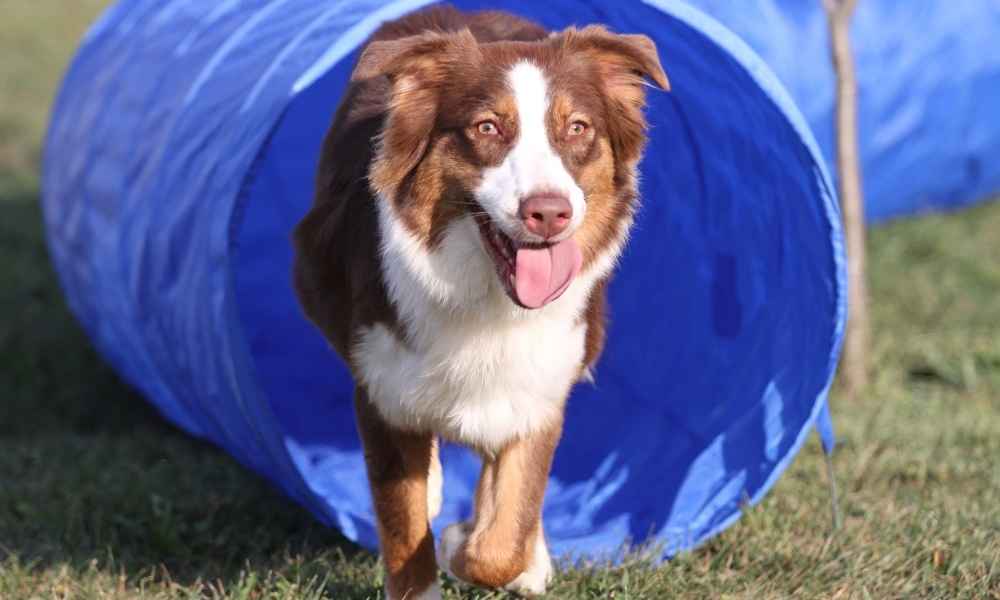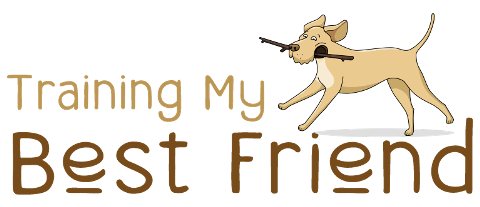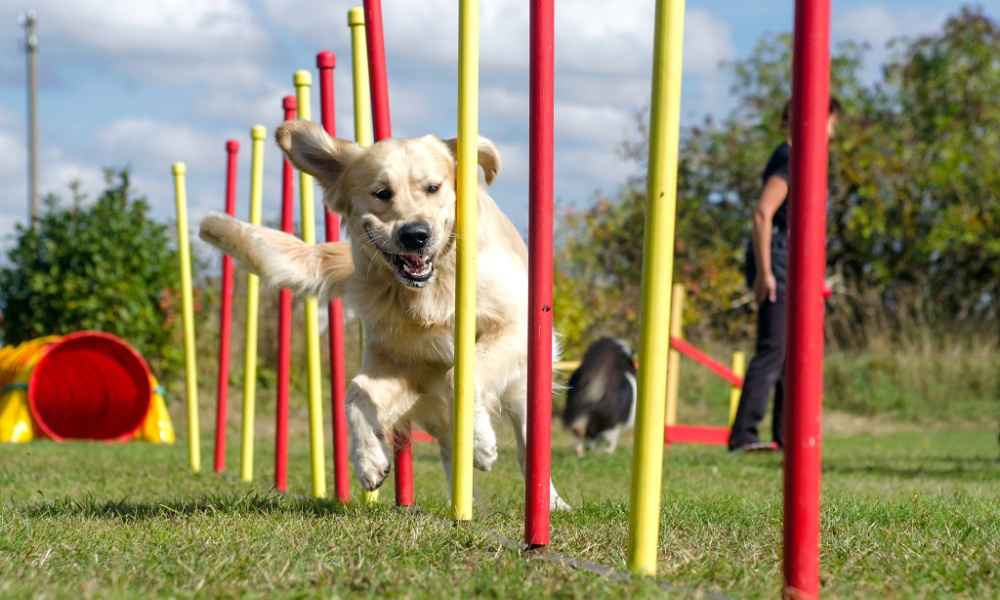How to Train a Dog for Agility?
As far as competitive sports for dogs go, agility is one of the most popular and exciting. Agility is an obstacle course comprised of walkways, tunnels, and jumps.
The dog and their handler work as a team, with the handler assisting the dog to navigate through the obstacles to do them in the right order.
Some owners do agility training with their dogs for fun, whereas others love competing in trials. During agility trials, the dog and handler compete against other teams to find who does the obstacle course with the least mistakes in the fastest time. If you are interested in training your dog for agility, read on to find out how.

How to Train a Dog for Agility?
Dogs will normally start competing in trials when they are around 1 to 2 years old. Puppies and younger dogs can get hurt if they start too early. Talk to your vet to find out when your pup is ready to start agility training, specifically the jumps. You can begin training your pooch before they are old enough to compete.
Basic Obedience Lessons
Start by teaching your pup basic obedience. Teach them to sit, come, lie down, stay, and heel. Your puppy will benefit from classes around other dogs to teach them both obedience to you and proper behaviour around other people and dogs.
Introduce Obstacles
Once your dog is old enough and their bones are developed enough to start agility training, there are various contact obstacles to introduce.
Teeter-totter
This is much like what you would see on a playground, and your dog must walk from one side to the other as it shifts under their weight.
A-frame
This a walkway with a steep incline in a cone shape that your pup needs to walk up and then down the other side.
Dog walk
This is like a balance beam with ramps on either side that your dog must go up, across, and down.
These obstacles are also called contact obstacles as there are spots on one or both sides that your pooch must touch with their paw. You teach your pup to contact the areas by placing treats in the area. Only give them the treat when they put their paw in the area. This must be taught as you teach your pup each obstacle.
When you start, put the obstacles in their lowest position. Teach your dog by leading them on a leash while giving them a command based on the obstacle, such as “teeter-totter.”
Increase your speed when approaching the obstacle and lead your dog over it. Use treats to coax them through the obstacles if needed initially. If your dog refuses to do the obstacle, try doing the obstacle in reverse or pick up your pooch and put them on the end of the obstacle.
Normally, dogs will start by taking one or two steps to get off the end. Once they have done this, put them back at the end a few steps further away. Keep moving them further and further back until they do the whole obstacle.
Once your pup has learned the basic obstacles, you can teach them to do jumps, tunnels, and to weave through poles.

Teaching Your Dog to Stay on a Pause Table
A pause table is something your pup must jump onto to perform a down-stay or a sit-stay. The table is normally the height of a couch, so you should be able to convince your dog to get on it quite easily. Pat the surface and use treat to get your dog onto the table.
The hardest part of this obstacle is to keep your dog in the stay position. Most dogs want to move on to the next obstacle.
If your pup has trouble, begin small. Have them sit for one count, then give them a treat. Increase the time gradually, rewarding them at each success. Once they can stay for 5 seconds, practice with distractions to mimic the agility trial conditions.
Complete the Training with a Sequence
Once your pup has mastered the obstacles, you need to put it all into a sequence. Teaching your dog the order of the obstacles is called sequencing. Begin by linking just two obstacles like the tunnel and a jump. Give your dog his command for the jump. Then, before they finish the jump, say “tunnel.”
It is vital to get the timing correct with sequencing. If you do not give the command soon enough, your dog will not know what to do and may move on to another obstacle that may be the wrong one.
FINAL VERDICT
When your dog can do two in a row, add another one, and another until they complete the entire course. Once they can do that, they are trained and ready for agility trials.

